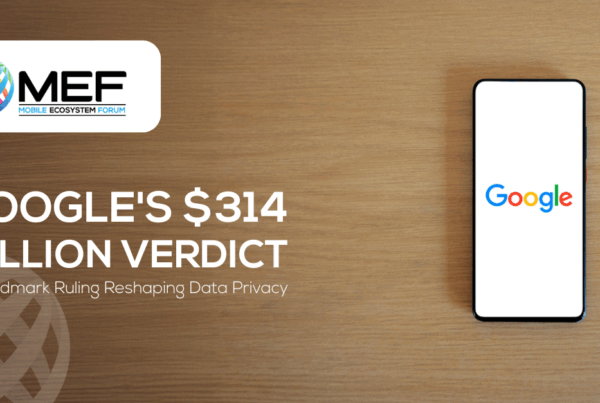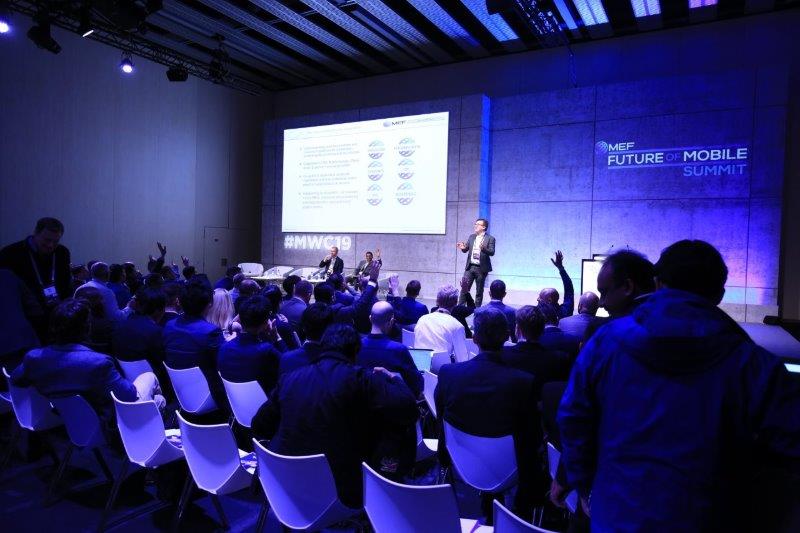MEF CEO Dario Betti looks at the upcoming changes to the FCC’s rules around opt-ins for commercial communications in the US and how it might impact the wider industry.
Members of MEF will know how important it is to keep the “channel clean” and lot of work has gone into limiting spam and fraud in enterprise communications. The fight is not enough in-channel but it extends to the collection and maintenance of database for opt-in of communications services. The USA will see an important change in the way that communication consent is applied from January 2025. Many will be keeping an eye at the impact of the rules: some consider it too strict and negative to the industry, many others welcome the clarity on what consent is and the important of transparency. Here is a summary of what will happen from January 2025 in the USA and the impact on the industry.

The Lead Generator Loophole
The Federal Communications Commission (FCC) has made significant updates to the Telephone Consumer Protection Act (TCPA) to address a longstanding issue known as the “lead generator loophole.” This change, adopted through a Report and Order in January 2024, introduces more stringent consent requirements for businesses involved in telemarketing, including calls or texts made using auto-dialers or pre-recorded messages. Specifically, the new provisions require that companies secure “one-to-one” consent directly from consumers for each individual seller, instead of relying on a single consent obtained through lead generators or comparison-shopping sites. This article will break down the background, details, and implications of the new FCC rules.
Background: The Lead Generator Loophole and Consent Issues
In the world of telemarketing, lead generators currently play an important role by collecting consumer information and selling it to businesses for marketing purposes. Often, a consumer may visit a lead generator or comparison-shopping site, provide their contact details, and inadvertently grant consent for telemarketing to multiple companies listed on the website. In this context, lead generators would often secure a single broad consent from consumers, covering numerous potential sellers. This blanket consent allowed various businesses to contact the consumer without obtaining direct, individual consent, exploiting what is known as the “lead generator loophole.”
Under previous regulations, lead generators could gather consumer consent in a manner that many argued was less transparent, often using fine print or indirect language to inform consumers about the extent of their consent. The new rule aims to protect consumers from unwanted telemarketing by ensuring that consent is both specific and transparent, limiting the reach of these “catch-all” consents.”
Under previous regulations, lead generators could gather consumer consent in a manner that many argued was less transparent, often using fine print or indirect language to inform consumers about the extent of their consent. The new rule aims to protect consumers from unwanted telemarketing by ensuring that consent is both specific and transparent, limiting the reach of these “catch-all” consents.
New Requirements: One-to-One Consent
One of the primary updates in the FCC’s 2024 Report and Order is the introduction of a “one-to-one” consent rule for telemarketing calls or texts. This provision modifies the definition of “prior express written consent” under the TCPA, making it more explicit that each telemarketing call or text must be based on individual consent from the consumer for each seller involved. As a result, if a lead generator’s website lists multiple businesses or sellers, each of those sellers must secure its own specific consent from the consumer.
The FCC has clarified that companies can achieve this through a range of methods. For instance, the website can provide separate opt-in boxes for each seller, allowing consumers to selectively grant or deny consent for each business they choose. This approach ensures that consumers have control over which companies can contact them, empowering them to make informed choices.
In addition to obtaining separate consent for each seller, the FCC requires that the disclosures about these consents must be “clear and conspicuous.” In practical terms, this means that sellers must be transparent about the companies they are asking consumers to grant consent to and cannot bury this information in fine print or relegate it to separate pages accessible only through links. Instead, the disclosure about the businesses that may contact the consumer must be clearly visible and presented in a straightforward manner.
Compliance and Enforcement Timeline
The FCC’s new rule has been approved by the Office of Management and Budget, and businesses are expected to comply with these requirements by January 27, 2025. This enforcement timeline has given businesses some time to adjust their practices, especially those that rely on lead generators for consumer leads. In practice similar changes in the website ‘cookies’, have seen companies managing a very similar impact on digital campaigns before.
Businesses involved in telemarketing or utilizing lead generation services should prepare by updating their consent-gathering practices and ensuring that they meet the “one-to-one” requirement by the compliance deadline. The FCC has stressed the importance of compliance with these rules, underscoring that companies that fail to adhere may face penalties.
Implications for Consumers
For consumers, these updates are a significant step toward enhanced privacy and control over telemarketing practices. The new rules aim to reduce the volume of unwanted telemarketing contacts by ensuring that consumers explicitly agree to communication from each individual business. By requiring “one-to-one” consent, the FCC is giving consumers more control over who can contact them and how often.
Additionally, the requirement for clear and conspicuous disclosures should help consumers better understand what they are agreeing to. Previously, disclosures could be hidden in lengthy terms and conditions or on separate, obscure pages. With the new rule, sellers must ensure that these disclosures are upfront and visible, making it easier for consumers to make informed decisions.
Impact on Lead Generators and Businesses
The new rule presents several challenges for lead generators and businesses that rely on these services. Lead generators will need to revamp their consent-collection processes to ensure compliance with the “one-to-one” consent requirement. This may involve implementing new website functionalities, such as separate opt-in boxes for each seller, and providing clear, individual disclosures for each company. These changes could affect the business models of lead generators, as they may face resistance from consumers who are less willing to provide individual consents to multiple companies.
For businesses purchasing leads from lead generators, the new rule could lead to a reduction in the number of leads available, as consumers may be more selective in giving their consent. Additionally, businesses will likely need to update their records and systems to manage these individual consents, ensuring that they only contact consumers who have explicitly opted in.
Legal and Regulatory Context
The FCC’s update aligns with ongoing efforts by regulatory bodies to protect consumer privacy and reduce unwanted marketing. With the rise of telemarketing and digital marketing, regulators have increasingly scrutinized practices that infringe on consumer privacy or exploit ambiguities in consent requirements. The closure of the lead generator loophole is part of a broader trend in regulatory policies that prioritize transparency and consumer choice in marketing practices.
The FCC’s emphasis on “clear and conspicuous” disclosures mirrors similar requirements in other consumer protection regulations, such as the Federal Trade Commission’s (FTC) guidelines on advertising disclosures. In both cases, the goal is to ensure that consumers are fully informed about the choices they are making. The FCC’s one-to-one consent rule, specifically, is a response to consumer complaints and legal challenges about unwanted telemarketing practices, reinforcing the agency’s commitment to protecting consumer rights under the TCPA.
Conclusion
The FCC’s new rules on telemarketing consent represent a significant shift in how businesses can engage with consumers, particularly those utilizing lead generators. By mandating “one-to-one” consent, the FCC is closing the door on blanket consents that have enabled multiple sellers to reach out to consumers based on a single, often obscure, consent form. Instead, each business must secure separate, explicit consent, which gives consumers greater control over who can contact them and enhances transparency in telemarketing practices.
For businesses, the one-to-one consent rule demands careful planning and adaptation, especially for those relying heavily on lead generators. With the January 27, 2025, compliance deadline approaching, companies have a limited window to implement the necessary changes to align with the FCC’s new standards. Failure to comply could result in penalties and reputational risks, underscoring the importance of adhering to these updated requirements.
Overall, the FCC’s recent update is a win for consumer privacy and transparency. By closing the lead generator loophole and enforcing clear consent standards, the FCC is ensuring that consumers have a more empowered role in telemarketing communications. These changes reflect a broader shift toward protecting consumer rights and reducing the prevalence of unwanted marketing messages in a rapidly evolving digital landscape.





